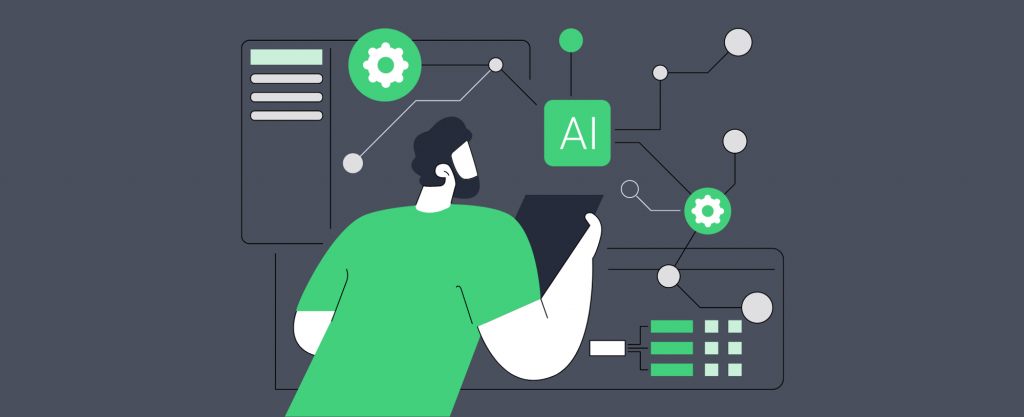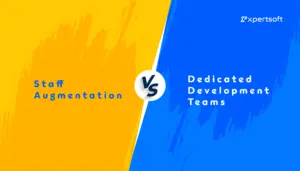Artificial intelligence (AI) and machine learning (ML) are revolutionizing the IT outsourcing industry by enabling businesses to automate complex tasks, gain deeper insights, and enhance overall efficiency. Integrating AI and ML into outsourcing strategies has become crucial for companies aiming to stay competitive in a rapidly evolving technological landscape. This article explores how businesses can effectively leverage these technologies in IT outsourcing, highlighting key applications, benefits, challenges, and future trends.

Overview of AI and ML in IT Outsourcing:
AI and ML have become essential components of modern IT outsourcing. According to Gartner, AI-driven decision-making will be integrated into almost all business processes by 2024, making these technologies indispensable for optimizing operations and enhancing customer experiences (DOIT) (Pwrteams).

Applications of AI and ML in IT Outsourcing:
- Automating Repetitive Tasks: AI and ML can automate routine tasks such as data entry, invoice processing, and customer support, leading to increased efficiency and reduced errors (Outsourcing Insights) (JindalX).
- Enhancing Data Analysis: ML algorithms process vast amounts of data quickly and accurately, providing valuable insights that drive better decision-making and uncover new opportunities. Predictive analytics, powered by AI, helps businesses forecast trends and customer behavior (DOIT) (Jelvix).
- Improving Customer Service: AI-driven chatbots and virtual assistants handle a high volume of customer inquiries simultaneously, providing instant and personalized responses. This enhances customer satisfaction and reduces the workload on human support teams (Jelvix) (JindalX).
- Optimizing Resource Allocation: AI and ML help businesses allocate resources more efficiently by analyzing patterns and predicting needs, ensuring optimal use of resources and improving overall productivity (Pwrteams) (Outsourcing Insights).

Benefits of AI and ML Integration:
- Increased Efficiency: Automating repetitive tasks and optimizing processes with AI and ML significantly boost operational efficiency, resulting in faster turnaround times and improved service quality (JindalX).
- Cost Savings: Automation reduces the need for manual labor, leading to significant cost savings. Additionally, AI-driven predictive maintenance prevents costly downtimes and repairs, enhancing the bottom line (Jelvix).
- Enhanced Accuracy: AI and ML algorithms are less prone to errors compared to human workers. This increased accuracy is crucial in fields like data analysis and customer service, where mistakes can have significant consequences (DOIT) (Outsourcing Insights).
- Better Decision-Making: The ability of AI and ML to process and analyze large datasets provides businesses with actionable insights, leading to better strategic decisions and improved business outcomes (Pwrteams).

Challenges and Considerations:
- Ensuring Data Privacy and Security: Handling large volumes of data with AI and ML raises privacy and security concerns. Companies must implement robust cybersecurity measures and comply with data protection regulations to safeguard sensitive information (Global Response) (JindalX).
- Managing Complexity: Integrating AI and ML into existing systems can be complex and requires specialized skills. Businesses need to invest in training and upskilling their workforce to effectively leverage these technologies (Jelvix).
- Addressing Bias in AI: AI algorithms can reflect biases present in the training data, leading to unfair outcomes. Implementing fair AI practices and regularly auditing algorithms is essential to ensure unbiased results (Outsourcing Insights).

Future Trends:
- Emerging AI and ML Technologies: Advances in deep learning, natural language processing (NLP), and computer vision will drive further innovation in IT outsourcing (Jelvix) (Pwrteams).
- Increased Use of Predictive Analytics: Predictive analytics will become more prevalent, helping businesses forecast market trends, customer behavior, and operational challenges, enabling proactive and strategic decision-making (Outsourcing Insights).
- Integration with IoT: AI and ML integration with the Internet of Things (IoT) will create smarter systems for monitoring and managing infrastructure, improving efficiency and reducing costs (Jelvix).
- Focus on Explainable AI: As AI becomes more complex, there will be a growing emphasis on explainable AI, making AI decisions more transparent and understandable, which helps build trust in AI systems and ensures their ethical use (Global Response) (DOIT).

Case Studies:
- Tech Innovators Leading the Way: Companies like Google and Microsoft are at the forefront of AI and ML integration in IT outsourcing, resulting in significant improvements in efficiency and customer satisfaction (Jelvix) (Pwrteams).
- SMEs Adopting AI for Competitive Advantage: Small and medium-sized enterprises (SMEs) are increasingly adopting AI and ML to gain a competitive edge, optimize operations, enhance customer experiences, and drive growth (Outsourcing Insights).
Conclusion:
Harnessing the power of AI and ML in IT outsourcing offers businesses a transformative opportunity to enhance efficiency, reduce costs, and drive innovation. By understanding the applications, benefits, challenges, and future trends of these technologies, companies can effectively integrate AI and ML into their outsourcing strategies and stay competitive in a rapidly evolving market.
For further insights, explore sources from Global Response, Jelvix, pwrteams, JindalX, and Outsourcing Insight.



